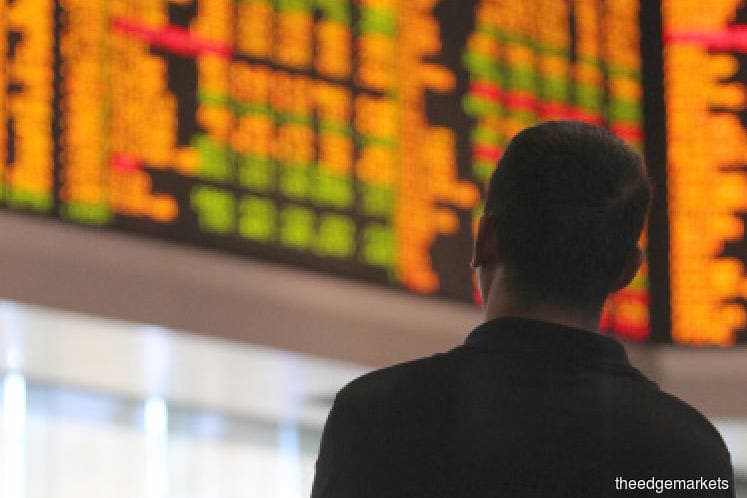
This article first appeared in Capital, The Edge Malaysia Weekly on March 26, 2018 - April 1, 2018
THE year so far has not been great for those who have invested in small and mid-cap companies on Bursa Malaysia.
Last Thursday, the FTSE Bursa Malaysia MidS Cap Index, which comprises small and medium companies with a market capitalisation of RM200 million to RM2 billion, closed at 15,523.54 points, down 14% from 17,990.8 points on Jan 8.
By comparison, the FBM KLCI, whose constituents are the 30 largest companies by market capitalisation, appreciated 2.5% in the two-month period and hit a four-year high of 1,876.87 points on Thursday.
Inter-Pacific Asset Management Sdn Bhd CEO Lim Tze Cheng is not surprised.
“It’s a simple psychological situation ... whenever there is optimism in the market, the small caps outperform the big caps, and whenever there is uncertainty or fear, the reverse is true.
“Why the lack of optimism in the market? Well, there is a lot of noise about a 10-year cycle for a global recession to occur, which I personally don’t see materialising as there are no signs of risks in the global economy [that would trigger a recession]. Then, there is US President Donald Trump and his tariffs.
“Also, the S&P 500 saw a sharp upward trend after Trump won the US presidential elections in November 2016 and the rally continued until a recent correction, which I think is healthy as it helps bring the market down to a more normal level before the next sustainable rally can occur,” he tells The Edge.
TA Investment chief investment officer Choo Swee Kee opines that investors’ shift to defensive stocks at times of uncertainty is not out of the norm.
“The sentiment in the market now is quite shaky and investors are jittery, and in such circumstances, the preference is for big caps as their businesses are more stable and steady … defensive stocks [per se]. Also, some of the small and mid-cap stocks have gone up a fair bit, in which case it is wise for investors to take profit,” he says.
Choo does not attribute the defensive play shift entirely to the imminent 14th general election. “Investor sentiment actually turned only in early February when the Dow Jones fell more than 1,000 points ... the market’s volatility was more of a trigger than talk of GE14, which has been circulating for months,” he says.
However, not all quarters view the sell-down in small and mid caps as a shift to defensive big caps by investors.
“The sell-down is driven by export-oriented counters that tend to be small and mid caps ... the strengthening of the ringgit against the US dollar affected the overall sentiment on export-oriented stocks, such as the tech players,” a fund manager, who declined to be named, tells The Edge.
“As for the Big Four glove makers that are big caps, they have the advantage of being able to adjust their prices so they are not as affected. Other than that, your run-of-the-mill big caps are usually telcos and banks. There aren’t many export-oriented blue chips.
“I wouldn’t say that the small and mid-cap selldown signals a shift to big caps as there is a different kind of investor in such stocks, for example, foreign funds.”
Buying opportunity for small and mid caps?
The fortunes of certain small and mid-cap tech stocks, which had a good run last year, seem to have reversed this year. Up to last Wednesday and year to date, P.I.E Industrial Bhd was down 27.8%, Pentamaster Corp Bhd, 27.4%, Foundpac Group Bhd, 48%, Aemulus Holdings Bhd, 37.4%, and JHM Consolidation Bhd, 15.3%.
Nevertheless, Interpac’s Lim is positive on the tech sector, in particular semiconductor players. “There is scepticism about semiconductor stocks when the ringgit strengthens against the greenback but their margins are actually quite high and can withstand the impact of a stronger ringgit.
“Also, it is not just smartphones that will be driving demand for semiconductors but also the automotive sector ... and I’m not just talking about electric cars or self-driving cars. The technology used in most vehicles today will only advance, thus driving demand,” he says.
Apart from semiconductor players, a mid cap whose share price declined despite posting decent earnings growth is Gabungan AQRS Bhd. Year to date (YTD), the construction and property development company has lost 17.1% — it closed at RM1.60 last Wednesday — despite a more than 100% surge in its trailing 12-month earnings.
Similarly, its peer Gadang Holdings Bhd saw a 17.12% price erosion to 92 sen YTD in spite of a 6% growth in its trailing 12-month earnings.
While it is still early days, capital market players are hopeful that measures mooted early this year at the World Capital Markets Symposium will boost retail interest in small and mid caps.
The measures include a stamp duty waiver on the trading of small and mid caps —those with a market capitalisation of between RM200 million and RM2 billion as at Dec 31, 2017 — from March 1, 2018, to Feb 28, 2021.
Save by subscribing to us for your print and/or digital copy.
P/S: The Edge is also available on Apple's AppStore and Androids' Google Play.